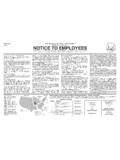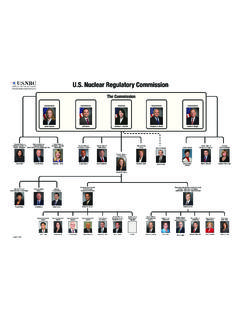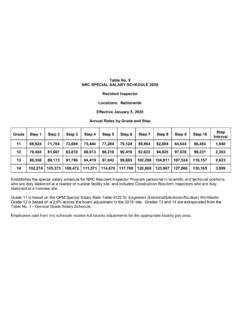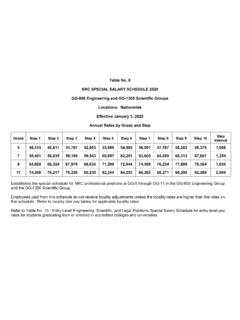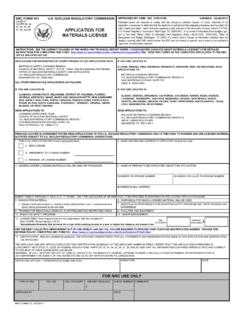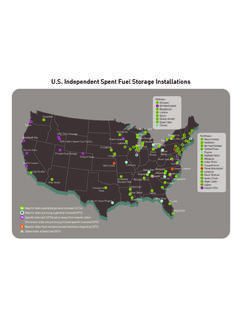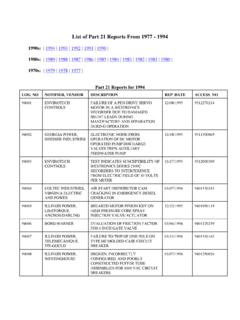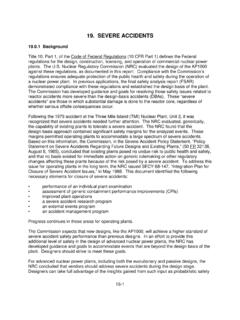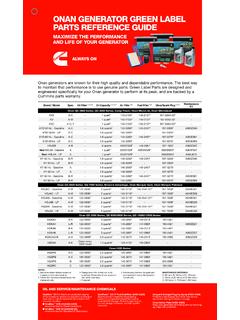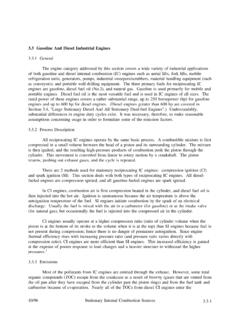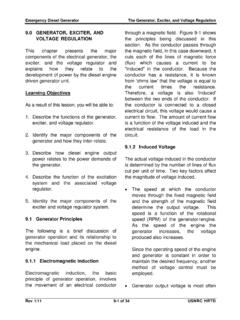Transcription of Chapter 5 ENGINE LUBRICATION SYSTEM
1 Chapter 5* ENGINE LUBRICATION SYSTEML earning Objectives:As a result of this Chapter , you will be able LUBRICATION and the types of the function of the diesel ENGINE LUBRICATION the major components of the typical diesel ENGINE LUBRICATION SYSTEM and trace the flow path of the lubricating oil through the the purpose and describe the operation of the LUBRICATION oil keep warm and pre-lube SYSTEM (s) as are commonly used on nuclear plant diesel Fundamentals LUBRICATION is defined as the application of lubricants to minimize friction between moving contact surfaces. Friction is the force that acts at the contact surface between two bodies which causes resistance to theirbetween two bodies which causes resistance to their relative motion. Forced movement of adjacent surfaces can wear away the surfaces and also create heat as illustrated in Figure 5-1.
2 Types of friction are illustrated in Figures 5-2 and 5-1 Frictional SurfacesFigure 5-2 Types of FrictionFigure 5-3 Rolling FrictionLubrication to achieve fluid friction is accomplished by lubricant wedge formation with laminar flow of the lubricant between the surfaces, as illustrated in Figures 5-4and5-5 Application of this principle toFigures 5-4 and 5-5. Application of this principle to the crankshaft is illustrated in Figure 5-4 Laminar ActionFigure 5-5 Wedge FormationFigure 5-6 Shaft and BearingLubrication Functions Maintain a film of LUBRICATION between moving parts. Create a gas tight seal between the piston rings and cylinder wall. Remove and dissipate heat. Keep surfaces cleanLubricants properties must be as specified by the EDG manufacturer including: Viscosity Viscosity Index (no multi-viscosity oils) Pour Point Oxidation Resistance TBN/TAN numbers Naphthenic versus Paraffinic Lubracants A Specific Manufacturer s Lubricant (in some cases)A typical lube oil circulating and cooling SYSTEM is shown in Figure 5-7.
3 Details of some of their th Fi 5859510components are shown on Figures 5-8, 5-9, 5-10, and 5-7 Lube Oil Circulating and Cooling SystemFigure 5-8 Lubricating Oil PumpFigure 5-9 Lubricating Oil FiltersFigure 5-10 Lubricating Oil CoolerFigure 5-11 Pressure Relief ValveFigure 5-12 Pressure Regulating ValveA typical lube oil SYSTEM with keepwarm added is shown in Figure 5-13. LUBRICATION and cooling for the Pielstick ENGINE bearings, pistons, cylinders, cylinder heads and rocker arms are illustrated incylinder heads, and rocker arms are illustrated in Figures 5-14 and 5-13 Lube Oil SYSTEM with Keepwarm AddedFigure 5-14 Pielstick ENGINE Lube Oil FlowFigure 5-15 Pielstick Valve Rocker FlowLube Oil SYSTEM MonitoringTypically, the pressures and temperatures of the fluids in the LUBRICATION SYSTEM will be monitored and displayed on the ENGINE control panel.
4 A few other items in the lube oil SYSTEM may also be monitored, as follows: Crankcase pressure (vacuum). Because the oil is contained in the crankcase of the ENGINE , monitoring that space may indicate a problem in the ENGINE . A special sensor for doing so is shown in Figure 5-16. Main bearings may also be monitored for temperature. A sensor for that purpose is shown in Figure 5-17. Figure 5-16 Diaphragm-Type Crankcase Pressure Monitoring SwitchFigure 5-17 Bearing Temperature ProbeEND OF Chapter 5
